The mist beckons. It's time to face your fears.
D&D’s newest sourcebook is Van Richten’s Guide to Ravenloft, a massive expansion of one of the most popular D&D adventures of all time! It’s available for preorder now in the D&D Beyond Marketplace, and you’ll gain access to all the horrors within its pages when it’s released on May 18th, 2021. Let’s take a look at all the dark details we’ve learned about this upcoming book...
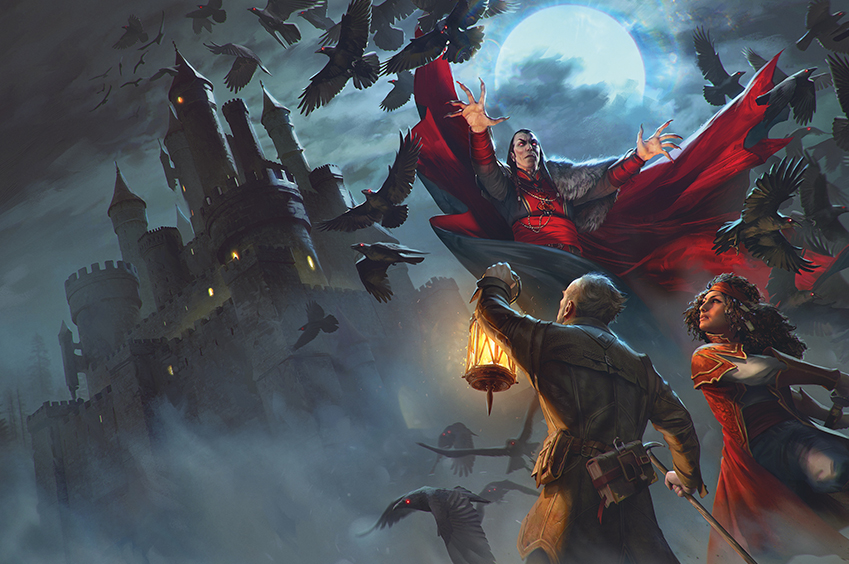
Beyond Strahd
While the creeping mist of Bavoria will be further explored in Guide, the 'boundaries' of Ravenloft are being massively redefined with the introduction of 30 different Domains of Dread- all different horror-themed settings to test the mettle and morals of your players! Like Strahd and his kingdom, each Domain will feature its own twisted Darklord with goals and machinations of their own.
Domains announced and discussed so far by the lead designer of Van Richten’s Guide to Ravenloft, Wes Schneider, at the book’s recent press event include Lamordia, a frigid vision of mad science gone wrong; the surreal, dark fairytale masquerades of Dementlieu; treachery and intrigue in the encounters in the dark rain forests of Kalakeri; and the endless zombie nightmare of Falkovnia. Further teased and suggested were even more flavors of horror: from most dangerous games to traditional ghost stories, and even D&D’s spin on cosmic dread.
“I’m a huge fan of all things horror, so it was an absolute thrill to frame this book around bringing frightening elements like mummy lords, cosmic terrors, and urban legends to more D&D tables,” said Schneider. “Working with exciting new voices in horror and visual artists like D&D concept artist Shawn Wood was essential to make sure we’re updating the aesthetic for today’s fans while staying true to the roots of Ravenloft.”
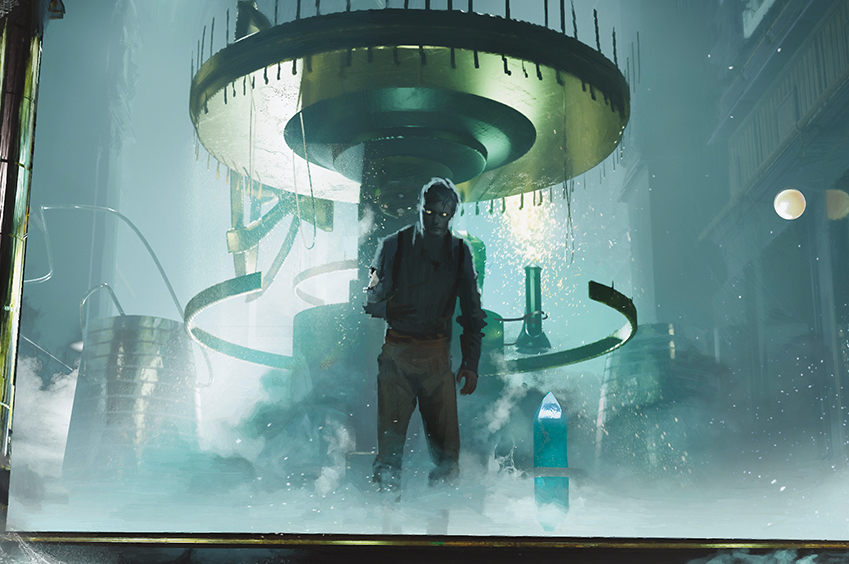
Old Enemies and New Faces
With Ravenloft in the title, old favorites like Strahd are to be expected--in fact, while the book is aimed at new players (who never had their copy of I, Strahd: The Memoirs of a Vampire taken away by their parents in middle school) that may be completely new to the setting, there are plenty of promised nods for long time fans--including the return of Ezmerelda d’Avenir, a fresh take on the Vistani, as well as a new generation of monster hunters in the Weathermay-Foxgrove Twins. And it’s good to have allies in horror, lest your party’s body parts be sewn together and reanimated by Darklords like Dr. Viktra Mordenheim.
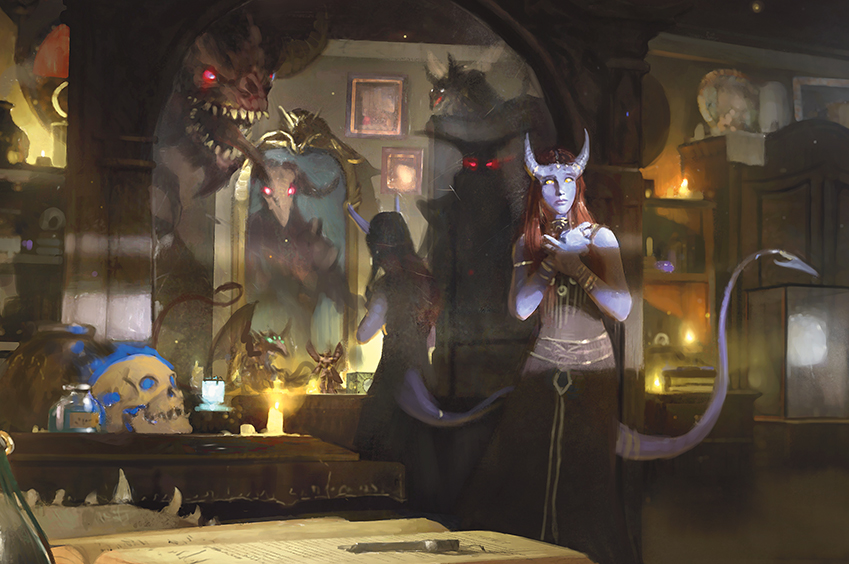
Saving Throws to Save Your Soul
Players will also get an opportunity to explore their characters’ dark sides with two all-new character subclasses: the College of Spirits Bard, powerful storytellers who control and manipulate the power and spirits of stories and folklore that shape the past, and the Undead Pact Warlock, for magic-users that want to make a deal with something truly horrific... at the cost of their soul.
Additionally, as recently explored in Unearthed Arcana, players can also create a dhampir, hexblood, or reborn character, which offer vampire, hag, and undead lineages, respectively. Schneider also challenged players with the idea that in Ravenloft, “death isn’t the end,” pushing the horror theme with ideas of reanimation, inherited mantles, and bloodlines to further explore the idea of lineage.
Especially intriguing is the addition of Dark Gifts--benefits bestowed with a deadly cost that provide even more role-playing ties to the Domains of Dread.
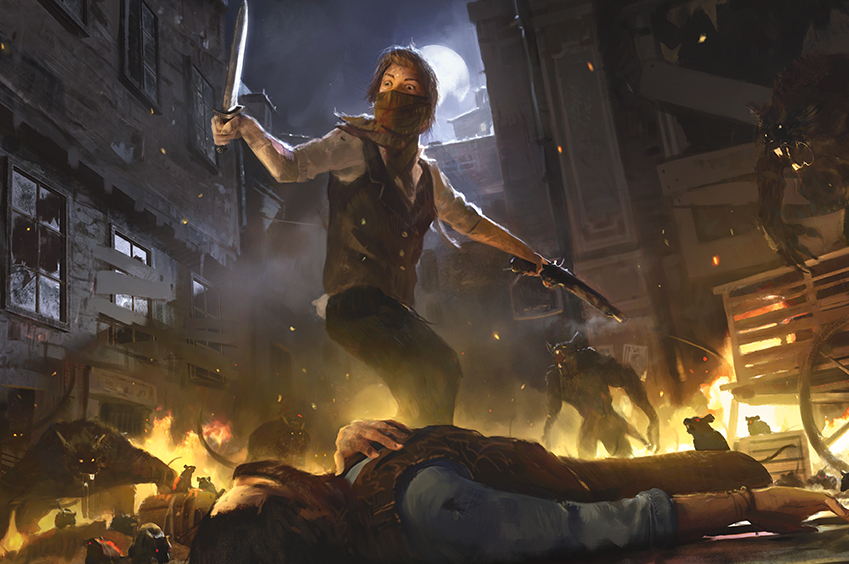
Monster Mash
Van Richten’s Guide also includes what Schneider describes as a “meaty” bestiary, with about 40 pages worth of horrific monsters---including classic Ravenloft favorites. He also discussed the book's guidance in taking existing monsters in D&D and approaching them from horrifying new angles. From single goblins to shambling zombies that first-level players would typically yawn at, this could change the way we approach encounters in the game.
If monsters are your horror flavor of choice, the book certainly seems to have captured them all, from D&D spins on pop culture classics, cosmic madness, and even plenty of creepy nautical nasties in the Sea of Sorrows.
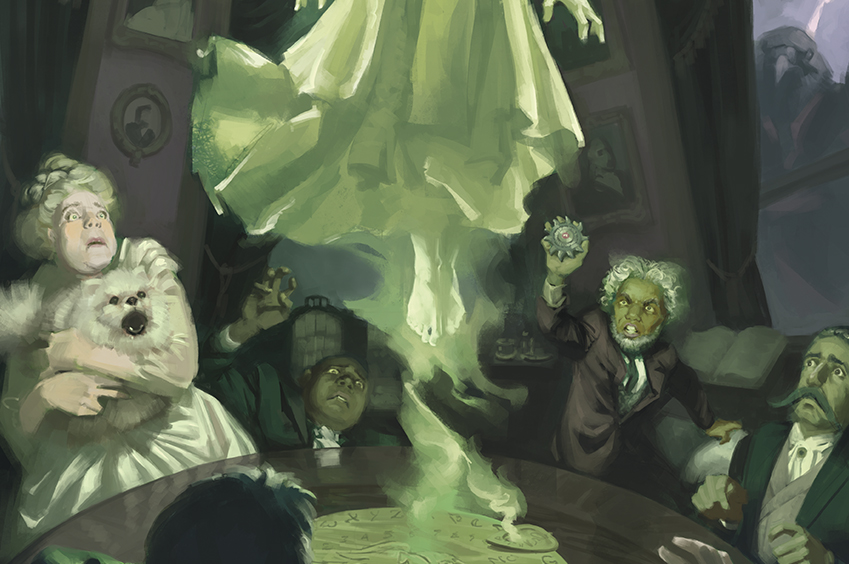
Whatever Walked There Walked Alone…
Of course, no sourcebook would be complete without an all-new adventure, and Guide features a 20 pages D&D spin on the classic haunted house genre, The House of Lament. It’s an atmospheric adventure of spirits, seances, and things going very, very badly.
The book, worked on by a who’s who of horror writers, also contains plenty of story hooks and guides for breaking out your own Tarokka decks and spirit boards for creating your own horror stories- and even your own Domains of Dread.
You can preorder Van Richten’s Guide to Ravenloft on the D&D Beyond Marketplace right now! You’ll get special goodies for pre-ordering, and instantly have access to the book when it releases on May 18, 2021.
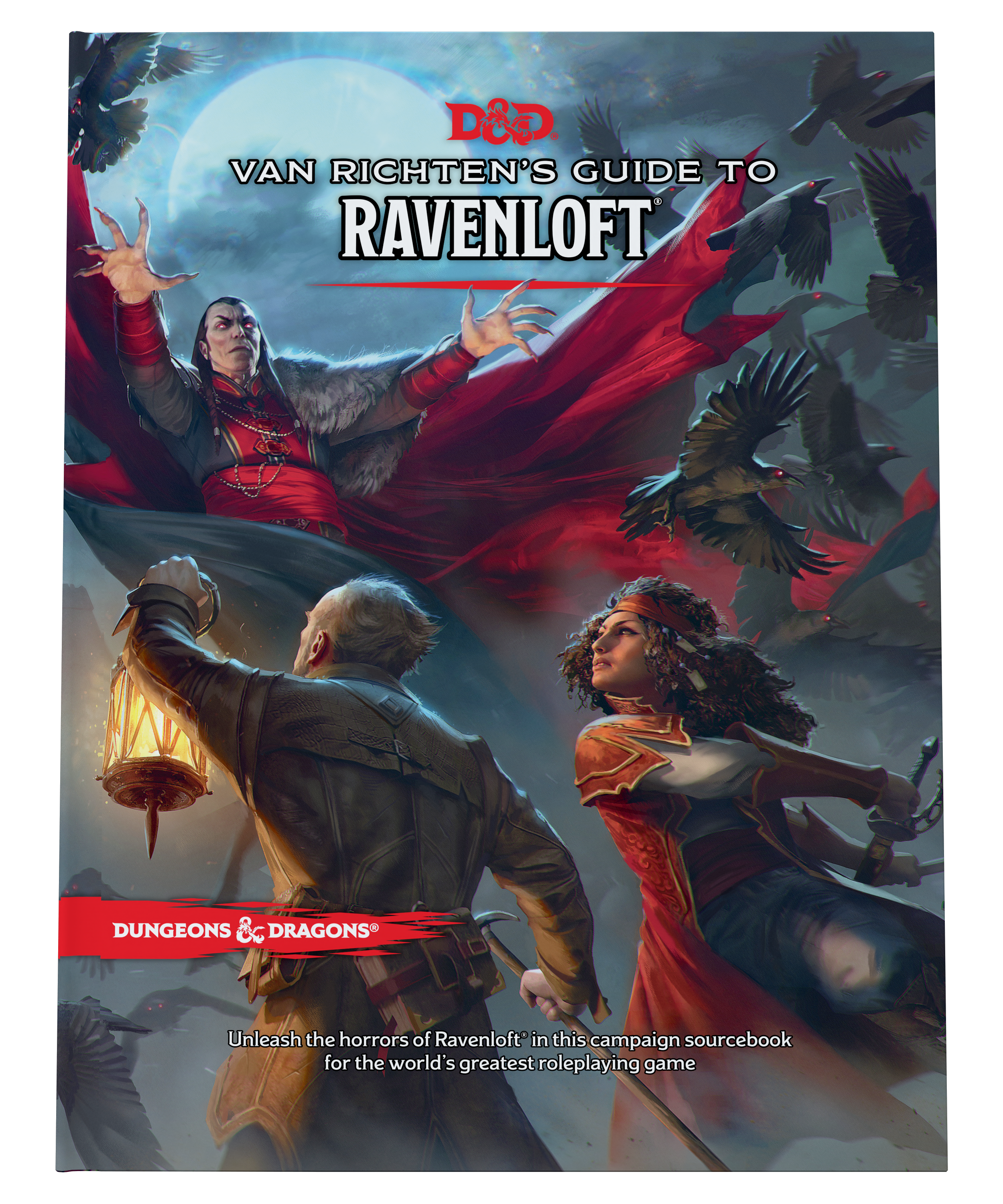








-
View User Profile
-
Send Message
Posted May 31, 2021It’s pretty similar. Instead of the zombies being the ones under oppressive rule it’s the actual inhabitants.
-
View User Profile
-
Send Message
Posted May 31, 2021Going to let you do it, if the dm lets you do it. The dm has total control over that sort of thing.
-
View User Profile
-
Send Message
Posted Jun 1, 2021Yep. All your favorite characters have been gender/race-swapped for no reason.
-
View User Profile
-
Send Message
Posted Jun 1, 2021Why do you even play 5e if you hate it so much? Personally you sound like a total killjoy to me who I would hate to have at any table.
-
View User Profile
-
Send Message
Posted Jun 1, 2021It's the developers that are flawed, not the system. Personally, you sound like the exact kind of player/DM I just described.
-
View User Profile
-
Send Message
Posted Jun 1, 2021"It's the developers that are flawed, not the system. Personally, you sound like the exact kind of player/DM I just described."
If you mean I like my players to have a good time, so I give them the freedom to create interesting characters, then yes, you have me pegged.
-
View User Profile
-
Send Message
Posted Jun 1, 2021If you and your fellow players like playing overpowered, unstoppable characters, then great. But don't tell me that ridiculously OP abilities on day one make a character "interesting."
-
View User Profile
-
Send Message
Posted Jun 1, 2021I kill player characters all the time because I don't like fudging rolls. Neither the PCs or NPCs in my games are OP, at least not by my standards; I have no idea what yours are.
I think you're 100% confident in your style of play and disinterested in actual debate or discussion with others, so I will bid you good day.
-
View User Profile
-
Send Message
Posted Jun 1, 2021That may be true. Don't care. We are not going to agree on this. Goodbye.
-
View User Profile
-
Send Message
Posted Jun 1, 2021I can't believe I didn't notice this earlier, but this entire argument (which is really annoying. Especially because it petered off for a while and then went undead and came back even worse), is based around them wanting lineages AND supernatural gifts, which is (probably) false. They are just asking a simple question about where the lineages will be put and if the supernatural gifts will be in the same spot.
-
View User Profile
-
Send Message
Posted Jun 2, 2021Also, if you hate 5e so much why go on a website for it? And other editions had way worse problems with balance. And other problems to. That’s why 5e exists.
-
View User Profile
-
Send Message
Posted Jun 2, 2021I already answered that question, but someone managed to get it deleted for wrongthink. In fact, they'll probably suspend me (again) for answering this, but I'm beyond caring at this point.
-
View User Profile
-
Send Message
Posted Jun 2, 2021I like the new names. Gender and racial diversity and inclusiveness are important. Remember, the novel Frankenstein was actually written by a woman so it kinda makes sense.
-
View User Profile
-
Send Message
Posted Jun 2, 2021Written by a woman, about a man. Blatant pandering is never important. If you want to see what actual inclusivity looks like, read anything by Giovanni Boccaccio.
-
View User Profile
-
Send Message
Posted Jun 2, 2021I hope they genderflip Strahd next.
Have you read the book? They did a really good job of rewriting some of the darklords, the gender flip is just a small part of it. Viktra is the darklord now, and Adam/Elise was rewritten as her wife brought back as a flesh-golem, instead of just being a random flesh golem Victor made for some reason. Ravenloft was sorely lacking in diversity.
-
View User Profile
-
Send Message
Posted Jun 2, 2021Was that satire? Because I can't tell anymore.
-
View User Profile
-
Send Message
Posted Jun 2, 2021It’s kind of hard to tell in an online comment chat. Is it just me or did this argument start again from a debate I participated in months ago. 😆 FleetCenturion you are a relentless purist, but I share your views on deviations from tradition. Genderflipping is an... interesting practice in literature. When done with care and reason it can add an exciting twist. However, as people are innately and mentally opposed to arbitrary change, I feel that it’s not the best approach. In literature (or D&D) I feel that rather than genderflipping an essential character, one should write the story from a female character’s perspective. Or in the case of D&D, place the emphasis on another female character. If I was writing a book (such as Mary Shelly’s “Frankenstein”) and all of the main characters were men. If I wanted to be inclusive, rather than changing several of the characters who were men, written as men, designed as men, and drafted as men, into women (which would most obviously be an awkward transition.) Rather I would create new characters entirely who were women. To genderflip may be easier, but as an author (and DM) I would certainly prefer the creation of new characters, to preserve the story. If Mary Shelly wanted a male character in Frankenstein to be female, she would have made them female.
-
View User Profile
-
Send Message
Posted Jun 2, 2021Woah woah woah, did they suspend you? That’s uncool. Even if all of us (including the DDB chat moderators and myself) disagree entirely with your opinions, your still entitled to voice them. People have completely forgotten that D&D is a game and it’s meant to be fun. If you don’t like something, don’t include it at your table. If you do like something, go for it. Frankly I wouldn’t be surprised if they suspended me as well for my comments on the Pride article.
-
View User Profile
-
Send Message
Posted Jun 2, 2021Given the biases and culture of the time and place in which she wrote it, that's tremendously unlikely. It was published anonymously in 1818, and her name didn't appear in the book until five years later, after a successful stage adaptation written by a man. And even then, it did not appear anywhere on the cover, but on an interior title page. Being a novelist at the time was already exceptionally scandalous, and being a woman novelist was doubly so. If a woman was not "allowed" to write novels, I really don't think much of anyone at the time would have been able to accept a woman doing necromantic science.
(she is also on record as hating basically every character in the story, and made numerous revisions in the 1831 edition to make everything less transgressive)
-
View User Profile
-
Send Message
Posted Jun 2, 2021She actually wrote the story in 1816, when she was hanging out at a lakeshore resort in Switzerland with her husband (Percy Shelley), Lord Byron (her husband’s best friend), her half-sister Claire (who was crushing on Byron) and a doctor named John Polidori. They were each supposed to write a Gothic horror story and the one she wrote became Frankenstein. I wonder if she would’ve made Victor a woman if the culture of the time had allowed her to. (I am definitely not a purist.)